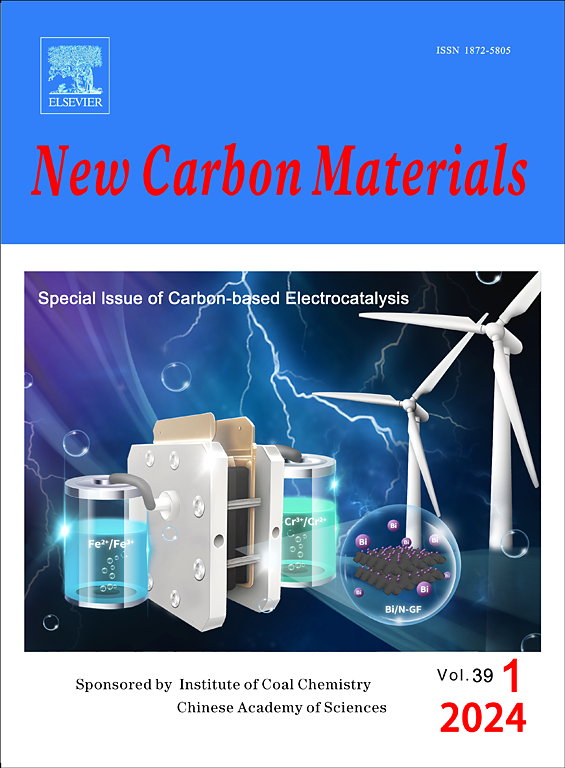Recent advances in producing hollow carbon spheres for use in sodium−sulfur and potassium−sulfur batteries
IF 5.7
3区 材料科学
Q2 Materials Science
引用次数: 0
Abstract
Sodium-sulfur (Na-S) and potassium-sulfur (K-S) batteries for use at room temperature have received widespread attention because of the abundance and low cost of their raw materials and their high energy density. However, their development is restricted by the shuttling of polysulfides, large volume expansion and poor conductivity. To overcome these obstacles, an effective approach is to use carbon-based materials with abundant space for the sulfur that has sulfiphilic sites to immobilize it, and a high electrical conductivity. Hollow carbon spheres (HCSs) with a controllable structure and composition are promising for this purpose. We consider recent progress in optimizing the electrochemical performance of Na-/K-S batteries by using these materials. First, the advantages of HCSs, their synthesis methods, and strategies for preparing HCSs/sulfur composite materials are reviewed. Second, the use of HCSs in Na-/K-S batteries, along with mechanisms underlying the resulting performance improvement, are discussed. Finally, prospects for the further development of HCSs for metal−S batteries are presented.
生产钠硫电池和钾硫电池用空心碳球的最新进展
室温下使用的钠硫(Na-S)和钾硫(K-S)电池因其原材料丰富、成本低廉、能量密度高而受到广泛关注。然而,多硫化物的穿梭、巨大的体积膨胀和较差的导电性限制了它们的发展。为了克服这些障碍,一种有效的方法是使用碳基材料,这种材料具有丰富的硫空间,具有固定硫的巯基位点,并且具有高导电性。具有可控结构和成分的空心碳球(HCSs)在这方面大有可为。我们探讨了利用这些材料优化 Na-/K-S 电池电化学性能的最新进展。首先,回顾了 HCSs 的优点、合成方法以及制备 HCSs/硫复合材料的策略。其次,讨论了 HCSs 在 Na-/K-S 电池中的应用,以及由此产生的性能改善机制。最后,介绍了进一步开发 HCSs 用于金属-S 电池的前景。
本文章由计算机程序翻译,如有差异,请以英文原文为准。
求助全文
约1分钟内获得全文
求助全文
来源期刊

New Carbon Materials
MATERIALS SCIENCE, MULTIDISCIPLINARY-
CiteScore
6.10
自引率
8.80%
发文量
3245
审稿时长
5.5 months
期刊介绍:
New Carbon Materials is a scholarly journal that publishes original research papers focusing on the physics, chemistry, and technology of organic substances that serve as precursors for creating carbonaceous solids with aromatic or tetrahedral bonding. The scope of materials covered by the journal extends from diamond and graphite to a variety of forms including chars, semicokes, mesophase substances, carbons, carbon fibers, carbynes, fullerenes, and carbon nanotubes. The journal's objective is to showcase the latest research findings and advancements in the areas of formation, structure, properties, behaviors, and technological applications of carbon materials. Additionally, the journal includes papers on the secondary production of new carbon and composite materials, such as carbon-carbon composites, derived from the aforementioned carbons. Research papers on organic substances will be considered for publication only if they have a direct relevance to the resulting carbon materials.
 求助内容:
求助内容: 应助结果提醒方式:
应助结果提醒方式:


